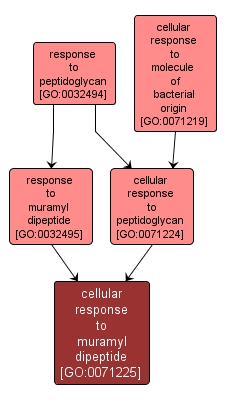GO TERM SUMMARY
|
| Name: |
cellular response to muramyl dipeptide |
| Acc: |
GO:0071225 |
| Aspect: |
Biological Process |
| Desc: |
A change in state or activity of a cell (in terms of movement, secretion, enzyme production, gene expression, etc.) as a result of a muramyl dipeptide stimulus. Muramyl dipeptide is derived from peptidoglycan. |
|

|
INTERACTIVE GO GRAPH
|














